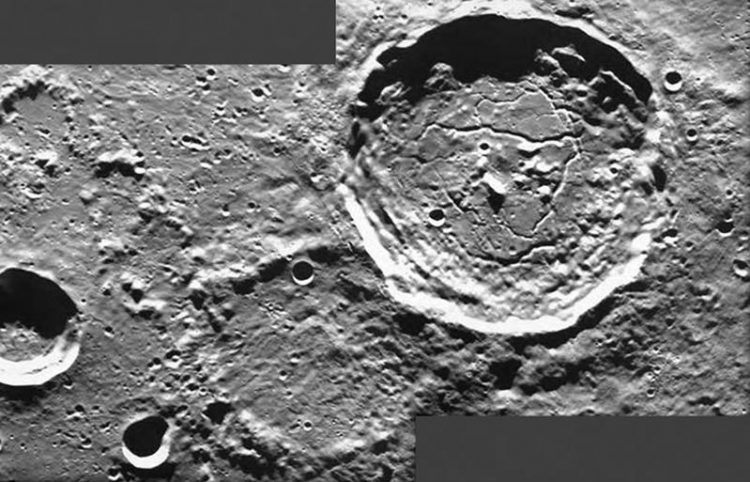Searching for water on the Moon: LZH develops laser for polar regions

In the LUVMI-X project, the LZH is developing a laser that is resistant to cold for the search for volatile elements, such as water, in the polar regions of the Moon. Photo: ESA / SMART-1 / AMIE camera team / Space Exploration Institute, CC BY-SA 3.0 IGO
The probability of finding water or other volatiles is highest in the polar regions, as they are frozen within the polar ice. To detect them, the LZH is developing a laser for a laser-induced breakdown spectroscopy (LIBS) system as part of the LUVMI-X project.
The laser radiation of the system breaks down molecules into their atoms. This creates a plasma and the atoms send out a characteristic spectrum. The spectrum of this plasma can then be compared with spectra of known atomic compositions to determine the elements in the sample.
In LUVMI-X the LZH, the Institute of Optical Sensor Systems of the German Aerospace Center (DLR) and OHB System AG jointly work on the LIBS system.
Goal: Reliable under extreme coldness
Such a laser must not only be small, compact, and robust, but also function reliably even in extremely cold areas with temperatures well below -100 °C. Such temperatures are problematic for conventional laser systems.
The finished system is to be tested by the DLR Institute of Optical Sensor Systems on regolith simulant, a substance that is very similar to Moon dust.
Of interest is, for example, how the plasma propagates in a vacuum and what parameters are necessary to make the measurement possible despite the difficult circumstances.
The low-temperature tests will be carried out by OHB System AG, which also develops the optical head of the instrument.
One of the objectives of the LUVMI-X project is a laboratory prototype for pre-testing. In the long term, the laser system is to be integrated into a moon rover. The development of this rover and other measuring instruments is also part of the research project.
The “Lunar Volatile Mobile Instrumentation Extended” project (LUVMI-X) is funded by the European Union within the scope of the Horizon 2020 funding program and coordinated by Space Applications Services NV / SA.
More information at: www.h2020-luvmi-x.eu
Media Contact
More Information:
http://www.lzh.de/All latest news from the category: Physics and Astronomy
This area deals with the fundamental laws and building blocks of nature and how they interact, the properties and the behavior of matter, and research into space and time and their structures.
innovations-report provides in-depth reports and articles on subjects such as astrophysics, laser technologies, nuclear, quantum, particle and solid-state physics, nanotechnologies, planetary research and findings (Mars, Venus) and developments related to the Hubble Telescope.
Newest articles

Superradiant atoms could push the boundaries of how precisely time can be measured
Superradiant atoms can help us measure time more precisely than ever. In a new study, researchers from the University of Copenhagen present a new method for measuring the time interval,…

Ion thermoelectric conversion devices for near room temperature
The electrode sheet of the thermoelectric device consists of ionic hydrogel, which is sandwiched between the electrodes to form, and the Prussian blue on the electrode undergoes a redox reaction…

Zap Energy achieves 37-million-degree temperatures in a compact device
New publication reports record electron temperatures for a small-scale, sheared-flow-stabilized Z-pinch fusion device. In the nine decades since humans first produced fusion reactions, only a few fusion technologies have demonstrated…





















